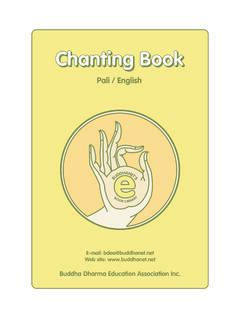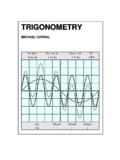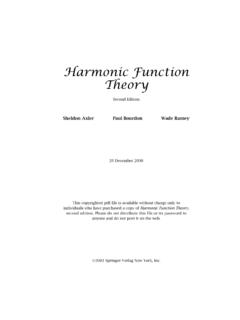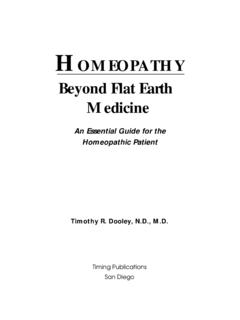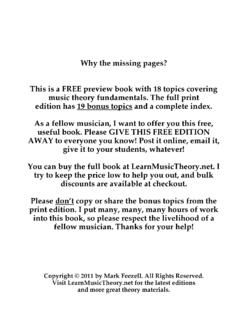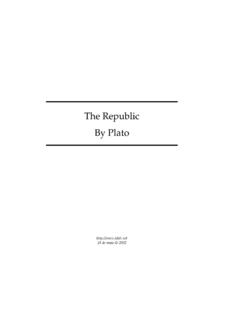Transcription of White Paper Series THE ENGLISH LANGUAGE IN …
1 White Paper SeriesTHE ENGLISHLANGUAGE INTHE DIGITALAGES ophia AnaniadouJohn McNaughtPaul ThompsonWhite Paper SeriesTHE ENGLISHLANGUAGE INTHE DIGITALAGES ophia AnaniadouUniversity of ManchesterJohn McNaughtUniversity of ManchesterPaul ThompsonUniversity of ManchesterGeorg Rehm, Hans Uszkoreit(editors)PREFACE is White Paper is part of a Series that promotes knowledge about LANGUAGE technology and its potential. It ad-dresses journalists, politicians, LANGUAGE communities, educators and others. e availability and use of languagetechnology in Europe varies between languages.
2 Consequently, the actions that are required to further support re-search and development of LANGUAGE technologies also differ. e required actions depend on many factors, such asthe complexity of a given LANGUAGE and the size of its , a Network of Excellence funded by the European Commission, has conducted an analysis of currentlanguage resources and technologies in this White Paper Series ( ). e analysis focusses on the 23 official Eu-ropean languages as well as other important national and regional languages in Europe.
3 E results of this analysissuggest that there are tremendous deficits in technology support and significant research gaps for each LANGUAGE . egiven detailed expert analysis and assessment of the current situation will help to maximise the impact of of November 2011, META-NET consists of 54 research centres in 33 European countries ( ). META-NETis working with stakeholders from economy (so ware companies, technology providers and users), governmentagencies, research organisations, non-governmental organisations, LANGUAGE communities and European universi-ties.
4 Together with these communities, META-NET is creating a common technology vision and strategic researchagenda for multilingual Europe e development of this White Paper has been funded bythe Seventh Framework Programme and the ICT PolicySupport Programme of the European Commission under thecontracts T4ME (Grant Agreement 249119), CESAR (GrantAgreement 271022), METANET4U (Grant Agreement270893) and META-NORD (Grant Agreement 270899). e authors of this document are grateful to the authorsof the White Paper on German for permission to re-useselected LANGUAGE -independent materials from their document[1].
5 Furthermore, the authors would like to thank KevinB. Cohen (University of Colorado, USA), Yoshinobu Kano(National Institute of Informatics, Japan), Ioannis Korkotzelos(University of Manchester, UK), BalaKrishna Kolluru (Uni-versity of Manchester, UK), Tayuka Matzuzaki (Universityof Tokyo, Japan), Chikashi Nobata (Yahoo Labs, USA),Naoaki Okazaki (Tohoku University, Japan), Martha Palmer(University of Colorado, USA), Sampo Pyysalo (Universityof Manchester, UK), Rafal Rak (University of Manchester,UK) and Yoshimasa Tsuruoka (University of Tokyo)
6 , for theircontributions to this White OF CONTENTS1 Executive Summary12 Languages at Risk: a Challenge for LANGUAGE LANGUAGE Borders Hold Back the European Information Society.. Our Languages at Risk.. LANGUAGE Technology is a Key Enabling Technology.. Opportunities for LANGUAGE Technology.. Challenges Facing LANGUAGE Technology.. LANGUAGE Acquisition in Humans and Machines..73 The ENGLISH LANGUAGE in the European Information General Facts.. Particularities of the ENGLISH LANGUAGE .. Recent Developments.
7 LANGUAGE Cultivation in the UK.. LANGUAGE in Education.. International Aspects.. ENGLISH on the Internet..134 LANGUAGE Technology Support for Application Architectures.. Core Application Areas.. Other Application Areas.. Educational Programmes.. National Projects and Initiatives.. Availability of Tools and Resources.. Cross- LANGUAGE Comparison.. Conclusions..305 About META-NET33A References35B META-NET Members39C META-NET White Paper Series431 EXECUTIVE SUMMARYIn the space of two generations, much of Europe hasbecome a distinct political and economic entity, yetculturally and linguistically Europe is still very such diversity adds immeasurably to the rich fab-ric of life, it nevertheless throws up LANGUAGE Portuguese to Polish and Italian to Icelandic, ev-eryday communication between Europe s citizens.
8 Aswell as communication in the spheres of business andpolitics, is inevitably hampered. To take one example,together, the EU institutions spend about a billion eurosa year on maintaining their policy of multilingualism, , on translation and interpreting services. Moreover,we tend to be shackled and blinkered by our linguis-tic environment, without, in many cases, being aware ofthis: we may be searching the Web for some piece of in-formation and apparently fail to find it, but what if thisinformation actually exists, is in fact findable, but justhappens to be expressed in a different LANGUAGE to oursand one we do not speak?
9 Much has been said aboutinformation overload, but here is a case of informationoverlook that is conditioned entirely by the LANGUAGE technology builds classic way of overcoming the LANGUAGE barrier isto learn foreign languages. However, the individualrapidly reaches the limits of such an approach whenfaced with the 23 official languages of the member statesof the European Union and some 60 other Europeanlanguages. We need to find other means to overcomethis otherwise insurmountable obstacle for the citizensof Europe and its economy, its capacity for political de-bate, and its social and scientific , how can we alleviate the burden of coping with lan-guage barriers?
10 LANGUAGE technology incorporating thefruits of linguistic research can make a sizable contribu-tion. Combined with intelligent devices and applica-tions, LANGUAGE technology can help Europeans talk anddo business with each other, even if they do not speak acommon , given the Europe-wide scale of the problem, astrategic approach is called for. e solution is to buildkey enabling LANGUAGE technologies. ese can then beembedded in applications, devices and services that sup-port communication across LANGUAGE barriers in as trans-parent and flexible a way as possible.
